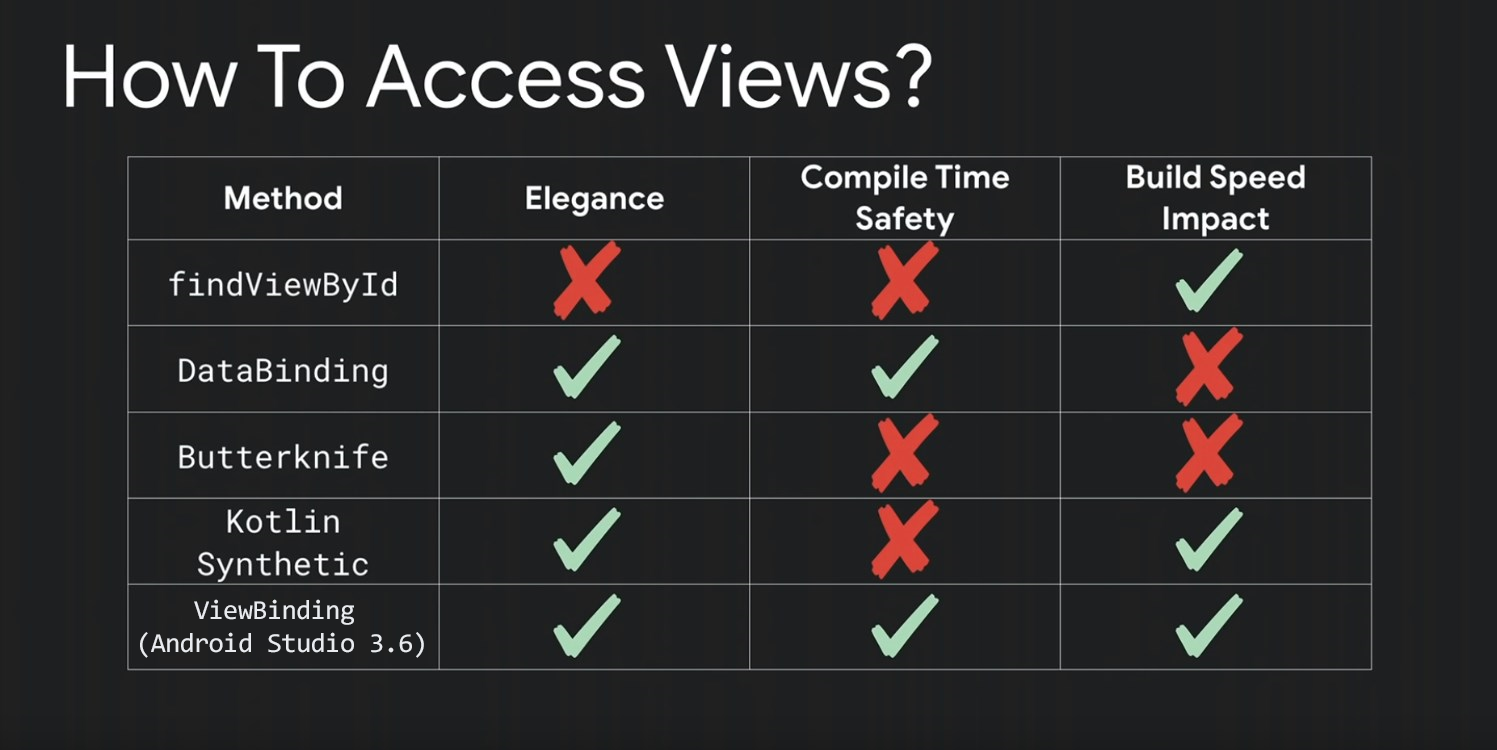I'm trying to figure out the best way to do Android View Binding in Kotlin. It seems like there are a few of options out there:
findViewById
val button: Button by lazy { findViewById<Button>(R.id.button) }
Butterknife
https://github.com/JakeWharton/butterknife
@BindView(R.id.button) lateinit var button: Button
Kotlin Android Extensions
https://kotlinlang.org/docs/tutorials/android-plugin.html
import kotlinx.android.synthetic.main.activity_main.*
I'm pretty familiar with findViewById and Butterknife in java land, but what are the pros and cons of each view binding approach in Kotlin?
Does Kotlin Android Extensions play well with the RecyclerView + ViewHolder pattern?
Also how does Kotlin Android Extensions handle view binding for nested views via include?
ex: For an Activity using activity_main.xml, how would View custom1 be accessed?
activity_main.xml
<...>
<include layout="@layout/custom" android:id="@+id/custom" />
</>
custom.xml
<...>
<View android:id="@+id/custom1" ... />
<View android:id="@+id/custom2" ... />
</>

